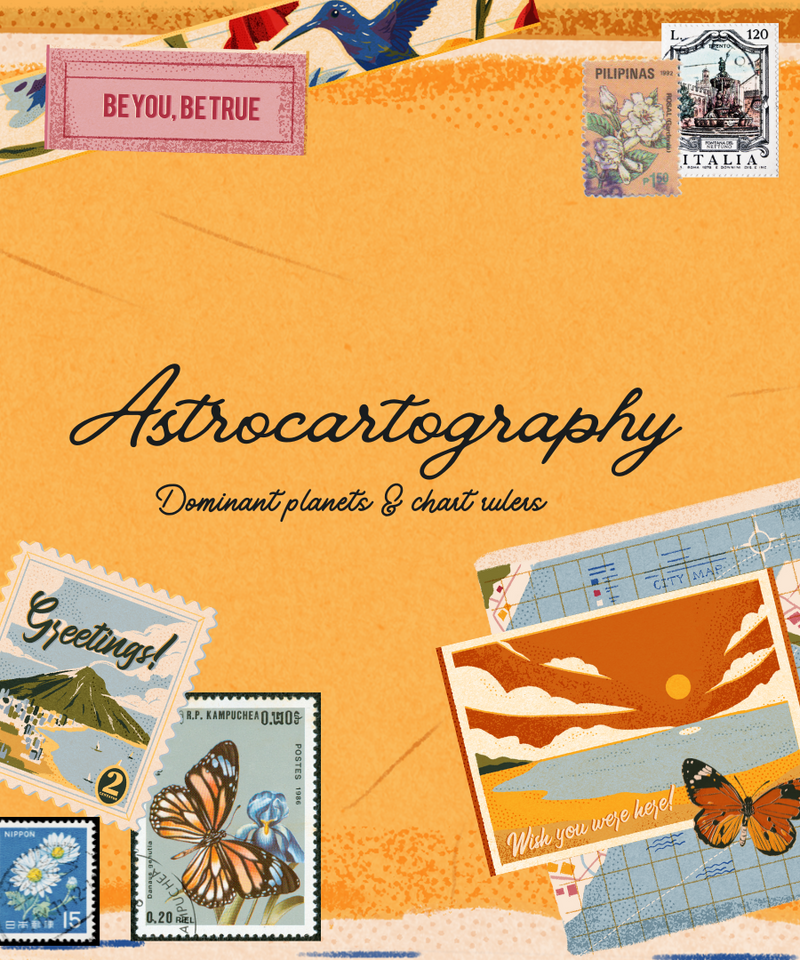Astrocartography is the astrology of where you live. Specifically, if we put your birth chart over a map of the world. The lines in an astrocartography chart are lines of the planets, and how they would appear if you were along certain places in the earth. It essentially shows you what places the planets would be along your particular house cusps, or in aspect to angles. If we stretched out your birth chart, and put the possibilities all over the world, we would get an astrocartography chart.
For example, a Jupiter on DC line would be a place where your natal placements shift so that your Jupiter is on the Descendant. A Venus Midheaven line would be where your birth chart is on your chart’s Midheaven. To read an astrocartography map, we have to keep in mind the natal placement of your planets. So Venus means money and love, who wouldn’t want that on their Midheaven? Maybe someone with Venus conjunct or in aspect to Pluto whether it be natally or in transit, where their lives would, perhaps very publicly, be upended in terms of career choices or love. This could be healing for the person, or damaging. It could bring up a lot of ignored issues with career choice or life path. The native could lose all that they have, or achieve their wildest dreams.
This is why it is so important to know and understand the natal positions of your planets first and how they operate. Again, for example, someone’s poorly aspected Venus in Capricorn (or hell, just Venus in Capricorn period), might not be suited for places on angles. It might drag the relationship down to a certain sadness or melancholy, or they might be very driven in their work life. They may feel married to their work. Please keep in mind the above examples are just off the top of my head, and are not all the possibilities of what could happen, the entire chart needs to be taken into account, not just one aspect. This isn’t to bully Venus in Capricorn, I have this placement, it’s just to say that Venus ruled by Saturn may be a hard placement if the native is not well equipped. We must also take into account Venus’s ruler, Saturn.
Some astrologers attribute angles to be active and moving- very important. Some don’t. But whatever you believe, when you put a planet in an angle, it amplifies. When you look at your astrocartography chart, please keep this in mind, no matter which form your practice.
Moreover, it’s not just about the angles. It’s the aspects. So someone with a trine aspect to the AC and a planet on the IC may feel well received in that community. Someone with a planet square the MC may feel quite driven, or conversely, frustrated, with that particular job or their path in life. They may get clear on what they want. Understanding your native aspects and how they function is important as well. You may have a bunch of trines in your chart, so living in a place with squares may be foreign to you, or stressful.
One easy way to see how the birth chart shifts, and to see all the houses in which it shifts, is to cast a relocated chart. This is especially important in a Solar Return chart, as many astrologers find that the relocated chart bears significance on Solar Returns. I am still playing around with that, so I will need to get back to you.
A quick note: A relocated chart never does, and can never, override the natal chart. The natal chart will still, at it’s core, impact you, whether you have relocated or not. Some astrologers have found use when tracking transits through the relocated chart. Some have not. Some astrologers have found that casting the relocated chart for a Solar Return to be pointless. Some have found it necessary to relocate the Solar Return chart. As with all things, I encourage you to try this out for yourself, and see what reigns supreme for you.




